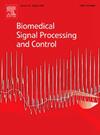IF 4.9
2区 医学
Q1 ENGINEERING, BIOMEDICAL
引用次数: 0
摘要
分解高密度表面肌电图(HD-sEMG)信号已成为假肢控制和人机交互(HMI)等各种应用中的有力工具。使用深度学习方法分解 HD-sEMG 信号可以省去诸如对 sEMG 进行白化等预处理,从而减少其在人机交互应用中的延迟。然而,目前用于盲区分离的深度学习方法主要使用基于窗口的分类方法,无法准确分解尖峰密集区。本文从序列到序列(seq2seq)的角度重新思考,将表面肌电信号分解问题定义为回归问题,并提出了一种高清 sEMG 信号解码方法 CKC-TCN。这是首次解决从单个时间窗提取多个尖峰的问题。我们将卷积核补偿(CKC)算法得到的每个运动单元(MU)的神经支配脉冲序列(IPT)视为连续时间序列,而不是类标签。我们训练时序卷积网络(TCN),以便从未经处理的 HD-sEMG 信号中提取样本级精度的各运动单元 IPT,然后提取运动单元点燃时间序列。为了评估所提方法的有效性,我们在模拟和真实的 HD-sEMG 数据上进行了实验。结果表明,与传统方法相比,CKC-TCN 的推理时间缩短了 99%,与最先进的深度学习解决方案相比,分离精度提高了 10%以上,实现了显著的性能提升。这使它更适合实时应用。本文章由计算机程序翻译,如有差异,请以英文原文为准。
Decomposition of high-density sEMG signals: Extracting multiple spikes from single time windows
Decomposing high-density surface electromyography (HD-sEMG) signals has become a powerful tool in various applications, including prosthetic control and human–machine interaction (HMI). Using deep learning methods to decompose HD-sEMG signals can eliminate preprocessing such as whitening of sEMG, thereby reducing its latency in HMI applications. However, current deep learning methods for blind separation mainly use window-based classification methods, which cannot accurately decompose spike-dense areas. In this paper, we rethink from the perspective of sequence to sequence (seq2seq), define the surface electromyography signal decomposition problem as a regression problem, and propose an HD-sEMG signal decoding method CKC-TCN. This is the first time that the problem of extracting multiple spikes from single time windows has been solved. Rather than class labels, we treat the innervation pulse trains (IPTs) of each motor unit (MU) that are derived from the convolution kernel compensation (CKC) algorithm as continuous time series. We train the temporal convolutional network (TCN) to extract sample-level accuracy IPTs of each MU from the unprocessed HD-sEMG signals, and then extract MU firing time sequences. To evaluate the effectiveness of the proposed method, we conduct experiments on both simulated and real data of HD-sEMG. The results show that, CKC-TCN reduces inference time by 99% compared to traditional methods and improves separation accuracy by over 10% compared to the state-of-the-art deep learning solutions, achieving a significant performance enhancement. This makes it more suitable for real-time applications.
求助全文
通过发布文献求助,成功后即可免费获取论文全文。
去求助
来源期刊

Biomedical Signal Processing and Control
工程技术-工程:生物医学
CiteScore
9.80
自引率
13.70%
发文量
822
审稿时长
4 months
期刊介绍:
Biomedical Signal Processing and Control aims to provide a cross-disciplinary international forum for the interchange of information on research in the measurement and analysis of signals and images in clinical medicine and the biological sciences. Emphasis is placed on contributions dealing with the practical, applications-led research on the use of methods and devices in clinical diagnosis, patient monitoring and management.
Biomedical Signal Processing and Control reflects the main areas in which these methods are being used and developed at the interface of both engineering and clinical science. The scope of the journal is defined to include relevant review papers, technical notes, short communications and letters. Tutorial papers and special issues will also be published.
 求助内容:
求助内容: 应助结果提醒方式:
应助结果提醒方式:


